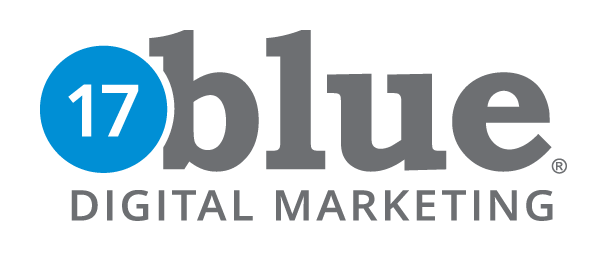Every great lie has a little truth in it, but these 5 myths have been around for years. Let’s find the grain of truth and bust the myth that traps your business.
Myth 1: You Can Save Money by Designing Your Website Yourself
Grain of truth: It will cost you less money.
Effective websites do more than establish an online presence, they also create a user-friendly experience, increase customer loyalty, differentiate you from competitors, and help drive sales. Virtually all consumers will visit your company’s website to learn more about your products or services before they contact your or visit your location.
Unless you’re experienced in website design with a solid knowledge of industry practices, designing your own website will cost you valuable time and may cost you sales. A weakly designed site can have several adverse effects on your brand. Have you considered analytics, user flow, SEO, CTAs, and UI/UX design? If you don’t recognize these terms, you may be missing key components for a successful website.
In today’s world, your website is your company’s virtual front door. Professional website design is crucial, because you only get one chance to make a first impression. It only takes 4-8 seconds for visitors to form an opinion about your company from your website or any other interaction. A poor user experiences is going to cost you much more in the long run.

Myth 2: Websites Don’t Have to be Mobile-Friendly
Grain of truth: Your old website will still load, if it shows up in search.
Websites that are exclusively built for desk-top computer screens will not display well on mobile devices. Will it show up at all? Sure, but that doesn’t mean visitors are going to have an easy time navigating its pages. Good mobile design starts with being responsive (automatically scaling to fit any size device). But it doesn’t stop there. It’s also about creating an optimized layout that best suits how a visitor interacts with your website on a mobile device. What’s more, Google and other search engines now favor mobile-friendly sites. Your old site “works” but it’s likely to keep slipping in search results.
A related Forbes article cites Pew Research stating, 77% of Americans have smartphones and Brightedge reports that 57% of all internet traffic in the US comes from mobile devices. That includes looking for local service providers and ecommerce. Mobile devices provide convenience, speed, and 24/7 access. If your website does not live up to current consumer expectations, your visitor interactions –and ultimately sales– will suffer.
Myth 3: More Elements = More Engagement
Grain of truth: People are looking for information.
Myth buster: Crowded pages lead to higher bounce rates. According to a 2000 study from Columbia and Stanford, more choices yielded more questions, but fewer choices produced a 300% increase in purchases. It’s commonly referred to as “choice overload.” This is true of product choices, but it’s also true with visual layouts. Visitors want to easily navigate your pages, find contact information, and locate what they are looking for without many steps or decisions. Consumers will leave a website if it loads slowly or has a hard-to-navigate layout. Quality over quantity is key.
White space is not wasted space; it can be your website’s best friend. Clear, focused designs on clutter-free webpages will resonate better with today’s minimalist-driven consumers. Content needs room to breathe, so it can be seen and easily digested. Don’t drown it out with too many options, photos, auto play videos and walls of text.
Overloading visual features makes it difficult for visitors to concentrate and know what to do next. It clouds perception, impedes your message and causes a loss of trust in your brand. Important elements such as CTAs (calls to action), products, and contact information can stand out when a solid hierarchy is in place to help guide visitors throughout your website to engage with your brand.

Myth 4: Once It’s Built You are Done
Grain of truth: It is still sitting there on the internet.
Once your website is launched, it’s tempting to say it’s finished. But that is far from the truth. In Google’s constant quest for fresh, relevant answers for users, they actively evaluate both domain authority and fresh content data. Updating page content and posting new products, articles, videos or other forms of content help keep your site qualified as relevant. Over time, that also contributes to domain authority.
As your brand changes and evolves with industry markets, so should your website. If you add new products or services, your website needs to be updated. If you redesign your logo or modify your company’s vision, your website needs to be updated.
Analytics can help identify areas to adjust to meet your consumers changing needs. Websites must be maintained and updated regularly to ensure they are operating at peak performance. Security is incredibly important in protecting customer data and confidential information. SEO practices also change over time. Periodic reevaluation and adjustments promote better performance.
Myth 5: You Must Love Every Detail of Your Website
Grain of truth: You should love how it represents your company. But…
Myth buster: Your website really isn’t for you personally. It’s for your customers. Its purpose is to serve your brand and illicit user engagement. If your target audience is in their mid-60s, but you are in your 20s, you might not love every detail. But when designed well, your target audience will love the site and you will love the leads and sales.
Your website must communicate with your customers in the buying process. It’s important to take a step back and view your website from their perspective. Even better, get some real feedback from a sampling of your audience. Find out if the information presented is relevant in form and appeals to your market. Do visitors understand what your brand has to offer? Do they feel trust at the first impression? A qualified web designer will work with you to meet the expectations of your customers and fulfill your brand goals.
The Truths of Effective Website Design
Many of the myths surrounding website design stem from practices of the past. But what worked then, doesn’t necessarily still work well today. Advancements in technology, search algorithms and changes in user expectations drive new best practices. Markets are living, changing entities. Your website should be a living, adapting entity, too. Effective and engaging website designs now include quality content, accessible information and positive user experiences.
Ensure your website stands out from the crowd and makes a lasting impression on your audience. See what’s possible when you let go of the myths and explore innovative website practices that will work today and tomorrow.





